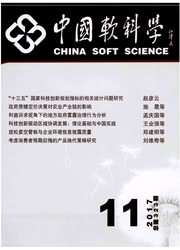

 中文摘要:
中文摘要:
中国应急管理体系存在着应急主体单一、权责匹配失当、法律位阶过低等问题,原因在于体系的动力结构失衡。厘清“一案三制”的内涵、功能及相互作用关系,分析美国和中国应急管理体系的动力结构特征:美国属法制驱动模式,社会广泛参与,体系较完备,操作性强,调整及时但易过度,动力传导效率较低;中国属体制驱动模式,政府高度集权,动力传导效率高,但体系不完备,操作性较差,调整滞后。结合中国应急管理所面临的理论预设更新、执政方式转变、社会结构变革、社会风险加剧等新态势,秉承多元治理理念,以制度创新为核心,从主体关系、制度规范、协同机制、文化培育等方面,提出中国应急管理体系的模式重构策略。
 英文摘要:
英文摘要:
There are several problems including government's sole discretion and matching misconduct of rights and responsibilities and a low level of legal hierarchy in Chinag emergency management system as a result of unbalance of the dynamical structure. This paper analyzes connotation, function and action mechanism of one-plan-three-system first. Then features of the emergency management system of United States and China were discussed respectively. The former in terms of legal driving has wider social participation, a more sophisticated system, better operability and higher level of agility, but inefficiency in power transmission. However, the latter in terms of institutional driving stands on the opposite position. Considering the changes of theoretical precondition, ruling mode, social structure and social risks faced by emergency managers in China, emergency management system can be reconstruction from the aspects of organization relationship, system specification, synergy mechanism and cultural cultivation adhering to the concept multi-governance.
 同期刊论文项目
同期刊论文项目
 同项目期刊论文
同项目期刊论文
 Emergency Management Organizational Structure Optimization Based on Information Transmission Reliabi
Emergency Management Organizational Structure Optimization Based on Information Transmission Reliabi Real-Time Pricing Control on Generation-Side: Optimal Demand-Tracking Model and Information Fusion E
Real-Time Pricing Control on Generation-Side: Optimal Demand-Tracking Model and Information Fusion E 期刊信息
期刊信息
